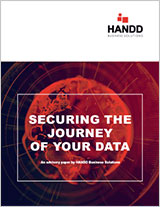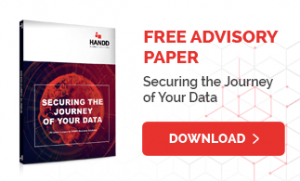DC Blog
Learn how to keep your business, its staff and your devices protected with our free resources
-
Report
Seven reasons to classify your data
The best way to protect and govern your data is to let it tell your business applications and infrastructure what it contains. Chris Farrelly explains how that’s possible and why you should do it
A quick Google search on “data, lifeblood, and business” turns up dozens of headlines, each with a hoary old cliché: data is the lifeblood of your company. This may be true, but it’s more complex than that. A person only has one blood type. A business has hundreds of data types.
To keep your business healthy, it’s important to understand the type of data a file holds, based on everything from its sensitivity level to its author, its time of creation, its file format and the business processes it supports.
The only way to achieve that is by classifying your data. You do this by embedding the necessary information directly into it, writing metadata into the digital records you want to secure. Here are seven reasons why you should do that.
Make your data its own protection platform
Wherever they travel, inside the organisation or out, your files will be able to describe facts about themselves to whatever software interacts with them. Your digital records can tell file management systems how sensitive they are, enabling that software to decide who can access them. They can tell data leak prevention software the kinds of information they contain, so that it can decide whether they can be sent outside the company or not.Handle your data appropriately
Your most sensitive records may be just a tiny subset of your organisation’s overall data. You don’t have to store all your files on expensive, fast media for instant retrieval. Neither do you need to use up lots of computing power encrypting them all.Your infrastructure automatically makes smart choices when managing correctly-classified files, securing them with the right level of protection and storing them in the right place. That saves you time and money.
Measure your protection
Programs that use classification metadata when making those decisions can give executives an audit trail showing what files are being protected, how, and why.This not only proves ROI, but is also a key component in governance, reporting and compliance. That will be a big deal for companies in 2018. According to a recent survey commissioned by HANDD Business Solutions, 21% of IT professionals said that regulation, legislation and compliance will be one of the biggest challenges to impact data security.
Find data quickly
Efficient data retrieval is another key benefit for compliance teams. The General Data Protection Regulation (GDPR) comes into force next year, and stipulates that anyone holding data on EU citizens must make it available in machine-readable format, at the data subject’s request. They must also delete it if asked.Tagging files with the appropriate metadata will enable companies to find that information more readily, and demonstrating that capability to regulators and customers alike will show that businesses are taking the new rules seriously.
Tame your existing information
Most companies have vast amounts of information spread around many different parts of the business. Those that don’t know what this ocean of files contains risk mistreating it and increasing their attack profile.Classifying that data brings existing digital information back under their control, closing any gaps in their security. Above all, it gives senior executives peace of mind that their information and technology strategies are built on solid, secure foundations.
Prevent insider threats
Insider threats are among the most difficult to prevent, because they stem from employee weakness. They can be malicious, involving intentional data theft, or accidental. Even when a company policy forbids it, employees can divulge information they shouldn’t through forgetfulness or a lack of training.Combined with identity and access management technology, data classification helps prevent that by allowing employees access to documents on a need-to-know basis. These systems map an employee’s access privileges to the sensitivity level in a document’s metadata, preventing them from manipulating and disseminating information above their pay grade.
Prevent outsider threats
Data classification can also prevent unauthorised third parties from seeing information they shouldn’t, even when a file makes its way outside the company.Businesses can encrypt data and restrict access based on factors including the viewer’s identity, and how long the file has been in existence. Commonly used software such as Microsoft Office respects these rules and will deny access when necessary, reassuring executives that their data is protected.
All companies these days are data centric, whether they know it or not, because data is such an important part of their existence. By classifying critical information about your data directly into your files, you create a continuum of confidence, extending from the moment you create your data until the moment you delete it.
That gives real meaning to the ‘data as lifeblood’ metaphor. Imagine encoding every digital cell with its own identity, and its own medical history. That’s innovation.


